Ryan Hall's Blog, page 351
September 17, 2015
Video: CBS Takes a Closer Look at Skyrunning

The network morning show CBS This Morning has a recurring series called “Pushing the Limits.” It was only a matter of time before they took a closer look at the boundary-push sport of skyrunning.
A CBS crew was in Montana recently for The Rut Mountain Runs, and interviewed several prominent ultrarunners like Max King, Emelie Forsberg, Luke Nelson and more, to try to get inside the mind of what pushes a runner to run 50K and beyond across punishing terrain and extreme elevations.
RELATED: Photos: The Rut Mountain Runs, 2015
The feature is below:
View More: U.S. News|Live News|More News Videos
.cbs-link {color:#4B5054;text-decoration:none; font: normal 12px Arial;}.cbs-link:hover {color:#A7COFF;text-decoration:none; font: normal 12px Arial;}.cbs-pipe {color:#303435;padding: 0 2px;}.cbs-resources {height:24px; background-color:#000; padding: 0 0 0 8px; width: 612px;}.cbs-more {font: normal 12px Arial; color: #4B5054; padding-right:2px;}
The post Video: CBS Takes a Closer Look at Skyrunning appeared first on Competitor.com.
Strava to Sponsor 10 American Women Vying for Olympic Trials Marathon
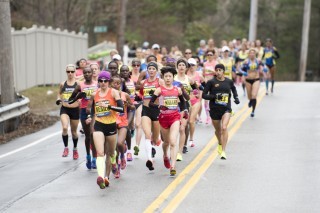
Photo: Scott Draper.
Strava, a GPS run-tracking app and online community of endurance athletes, announced this week that it will sponsor 10 U.S. women who qualify for the 2016 Olympic Trials Marathon being held on February 13, 2016 in Los Angeles.
Women who are qualified (or trying to qualify) for the race in Los Angeles can apply to receive one of 10 stipends worth $1,500 each to support their travel and expenses for the race.
“We want women to show up at the Trials in full force, to celebrate Joan Benoit-Samuelson and the 237 other women who made history in L.A. in 1984 by racing for a spot on the very first U.S. Olympic Marathon women’s team,” says Larissa Rivers, Strava’s run marketing manager. “We honor the women who’ve paved the way for today’s athletes. Like Strava itself, this program is designed to motivate and support avid athletes as they run down ambitious goals.”
The “Run to Rio” program is accepting applications through Sept. 25 on Strava’s website. Runners must meet the USATF A or B qualifying standard by Jan. 17, 2016 to be eligible for the stipend. Applicants will be evaluated based on running performance, community presence and a unique and deserving personal story.
According to marathonguide.com, there are currently 138 men and 171 women qualified to run in next February’s Trials. In order to qualify, women have to run an “A” standard time in the marathon (2:37:00 or faster), or meet the marathon “B” standard—a marathon time between 2:37:01 and 2:43:00, or a half marathon in 1:15:00 or under.
The post Strava to Sponsor 10 American Women Vying for Olympic Trials Marathon appeared first on Competitor.com.
September 16, 2015
25 October/November Races to Sign Up For
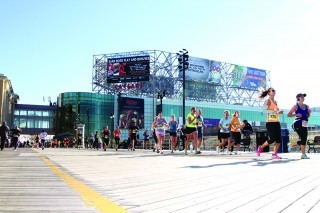
Atlantic City Marathon, Photo: Atlantic City Marathon Series
Fall is almost here, one of the most enjoyable times of the year to race. Marathon season is ramping up, plus you’ll find races to celebrate the fall colors, Oktoberfest, pumpkin patches—and an end to hot summer temperatures. Here’s a sample of races coming up in the next couple months.
Marathon/Half Marathon
Indianapolis Marathon
Oct. 17; Indianapolis
Celebrating its 20th anniversary, the Indianapolis Marathon is more low-key than some of the other big-city races in the Midwest. It emphasizes the fall colors that you’ll see in Fort Harrison State Park and Fall Creek Greenway Corridor Park, which are both on the route. Organizers take pride in producing a first-class, midsize, runner-friendly race.
Humboldt Redwoods Marathon
Oct. 18; Weott, Calif.
Choose between a marathon, half marathon and 5K at this annual event in the Humboldt Redwoods State Park, about 200 miles north of San Francisco, and run among 17,000 acres of untouched, old-growth redwoods. You’ll be hard pressed to find a more impressive course anywhere—plus you’ll enjoy plenty of shade nearly the whole route.
Rock ‘n’ Roll Denver Marathon and Half
Oct. 18; Denver
Experience a Rocky Mountain runner’s high when the Rock ‘n’ Roll Marathon Series comes to the Mile High City. With10K and 5K options as well, the event offers something for runners of all abilities on beautiful courses that run through downtown Denver with live music and great views at every mile.
Atlantic City Marathon
Oct. 18; Atlantic City, N.J.
Participants in this marathon and half marathon will run nearly the entire length of the famed Atlantic City Boardwalk on a course that has excellent ocean views. 5K and 10K courses are also available, and all runners will enjoy a post-race party featuring Atlantic City favorites like Harry’s Clam Chowder and Rita’s Water Ice.
Cape Cod Marathon
Oct. 25; Falmouth, Mass.
Organized by the Falmouth Track Club, this 37th annual event has a reputation for its scenic course that takes full advantage of the fall colors. However, the course isn’t easy, especially the second half of the marathon. With about 3,000 athletes running throughout the weekend, the race retains a small-town atmosphere but still feels like a big event.
Thunder Road Marathon
Nov. 14; Charlotte, N.C.
This somewhat challenging race, featuring a loop course through downtown Charlotte, has its share of hills to keep you on your toes. But the strong crowd support, great organization and scenic route have helped make this one of the more popular marathons in the Southeast.
The post 25 October/November Races to Sign Up For appeared first on Competitor.com.
Ask the Experts: ASICS’ Ryan Martin on Training and Mental Preparation

Our latest “Ask the Experts” with ASICS professional runner Ryan Martin discusses his favorite workouts, his mental preparation and a typical training week for a professional runner.
The post Ask the Experts: ASICS’ Ryan Martin on Training and Mental Preparation appeared first on Competitor.com.
Elizabeth Weil: 9 Ways to Beat the Heat

It may be September, but those of us in California are tackling our longest Chicago Marathon training runs in a heat wave.
I grew up in a small town near Sacramento, California, so I’m used to it. Needless to say, summer long runs often had to start by 6 a.m. to beat the 100+ degree heat. Over the years I’ve come to rely on the following formula for enjoyable (really!) hot weather running.
Start early
Goal: watch the sunrise. When plotting a summer long run, I aim to be watching the sunrise during my warm-up miles.
Plan ahead
Yep, I mean really plan ahead. I lay out my running clothes next to the bed so it looks like a dressed human is lying on the floor. Socks, shorts, sports bra, light tank, wicking hat, and sunglasses. (During high school I was even known to sleep in my running clothes.) When the alarm goes off, I hop out of bed, smear sunscreen everywhere and hop in my pre-selected clothes.
Breakfast
Even though you are trying to get out the door early, don’t skip breakfast. Have it prepped the night before. I eat the same bread, egg, tomato, and turkey sandwich every morning. So for early mornings, I nuke what I made the night before. It isn’t as good as fresh, but it is fast.
Fill that hand-held water bottle
I run with my 26-oz hand-held bottle. For hot runs I fill it with ice water from the start.
Salt tabs
For winter runs I take one salt tab each hour. Since warm days mean more sweat and faster electrolyte depletion I take two salt tabs each hour on the hour.
Plot your course
You are out the door early. But that is just half the battle. Plot your course to take advantage of both natural shade and water fill-ups. I have some routes that I don’t go near between May and September. I also have runs that I know have water fountains or spigots, or Starbucks, every three to four miles. I pack Nuun tabs in my shorts pockets to drop into my water for a little extra electrolyte kick.
Be a kid
Yes, the goal is to get your run completed, but take advantage of those “kid moments.” Run through the sprinklers on park lawns and jump in your nearby lake or river. During high school summer runs, I knew where the lakeside rope swings were hung. Stop your watch for a minute or two to cool off with some water splashes.
Eat
Even though you may not have much of an appetite during a long, hot weather run, be sure to fuel up like you do on your usual distance runs. Stick to that routine to avoid an electrolyte imbalance.
Hydrate when you are finished
It is easy to feel more fatigued and “less awesome” than usual after finishing a hot run. Even if you are feeling a little queasy, hydrate right away. Watered-down Gatorade is a popular choice. I often don’t want anything sweet, so water with a twist of lime is often my go-to post-run beverage.
The post Elizabeth Weil: 9 Ways to Beat the Heat appeared first on Competitor.com.
Laura Anderson: Just Say ‘No’ to Recovery Guilt
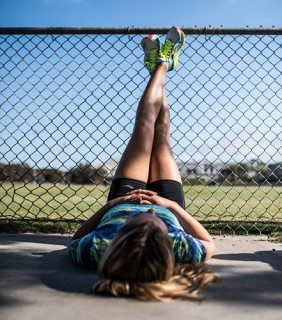
During marathon training, we spend hours upon hours each week pushing our bodies and testing our limits. But you can’t redline all the time without experiencing a breakdown. You can help prevent this by focusing on recovery during training as well as after the marathon itself.
Recovery can be tough, because we always want to be up and running and working towards goals. Remember, it’s a key part of training, and helps you stay strong and healthy. Give yourself time to recharge on rest days and during the period following the race. You’ll thank yourself in the long run.
Following are a few ways to help yourself recover stronger and faster, and to do it without feeling guilty for doing “less” than normal.
What to do:
Get some sleep!
Sleep is important time for your body to repair itself and extra sleep also helps boost your immune system.
Take easy runs, EASY
Running slower on your easy days allows the body to recover and prepare to push harder on the quality run days. Following hard workouts and races, it’s especially important to back off on distance and pace for a few days. The longer the workout/race, the longer recovery period should be.
Rest days, should be REST days
Take advantage of your rest days, and actually rest. This doesn’t mean go and do intense cross training or boot camp classes- use the time to unwind and focus on some other life priorities. Exercise will be there the following day, and the day after.
Fuel shortly after runs
The first 30 minutes after a workout is the most important in terms of recovery fueling. Ideally you want a protein and carbohydrate filled snack, have it handy so it’s there when you’re done running.
Body maintenance
Stretching, foam rolling, ice baths, hot Epsom salt baths and getting massages help bodies stay healthy and recover quickly. Recovery apparel, such as compression socks/sleeves, are great tools to use whenever you want–wear them to work or to sleep and even when running.
How to make it happen (without feeling guilty):
Schedule it
Put rest days on a calendar like you would a doctor’s appointment. Blocking it off can help remind you that it’s important, but don’t be afraid to take an unplanned rest day if you feel you need it.
Give it even a few minutes
Making a point to sit down and stretch/foam roll for even a few minutes before bed each night can be a manageable way to fit it in. Before you know it, it will just become habit and won’t feel like it’s taking over your day.
Make plans for off days
Rest days during training, and the days following the marathon are great times to schedule some fun plans with friends, family or solo. Celebrate your training accomplishments and the success of reaching the finish line, while enjoying good company.
Make it fun
Running with friends is a great way to make those slower easy runs more enjoyable. New routes also mix things up and give you a new place to explore while getting time on the feet.
Stop Counting
This is a big one, particularly after the marathon itself. Stop counting your calories, leave the step counter on your dresser and simply go about your days without worrying about the numbers. Seeing lower numbers than you’re used to can add a stress/guilt factor, so stop counting everything and just enjoy recovery! Eat what you want and rest when you want, you trained and ran a marathon- embrace the down time!
The post Laura Anderson: Just Say ‘No’ to Recovery Guilt appeared first on Competitor.com.
Shoe Of The Week: Brooks Glycerin 13
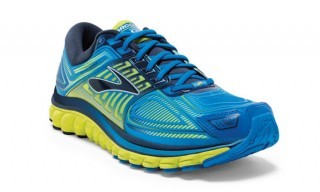
The Brooks Glycerin 13 is one of the softest, plushest training shoes on the market.
Fit-Feel-Ride: There is nothing unlucky about Brooks’ 13th incarnation of the Glycerin, a posh trainer that gracefully encapsulates layers of comfort technology to offer up one of the most cushioned rides on the market. It’s a premium neutral trainer with a floaty ride, and it tested like a performance pillow. Every footstep feels luxuriously soft. That sensation comes, in part, from pressure-dispersion through zoned construction, including a new beveled heel for smooth roll-through sensation after footstrike, a midsole updated with a resilient, adaptive cushioning layer, a plastic saddle insert that adjusts to the foot arch, and a seamless upper fit system that cradles the foot and provides a reliably secure fit. It’s ideally suited for long training runs to marathons, in which underfoot comfort is a premium quality. It’s not ideal for speed work, shorter races or other types of quick-cadence running, if only because it’s hard to run fast with cushy pillows under your feet. But if you want a shoe with a very supple, buttery-soft ride, this is the shoe for you.
This is the shoe for you if … You’re looking for a soft, plush trainer that’s agile enough for moderate longer-distance racing efforts
Price: $150
Weights: 11.3 oz. (men’s 9.0), 9.3 oz. (women’s 7.0)
Heel-Toe Offset: 10mm, 22mm (heel), 12mm (forefoot)
Info: Brooks Running
RELATED: Shoe Of The Week—Hoka One One Clifton 2
The post Shoe Of The Week: Brooks Glycerin 13 appeared first on Competitor.com.
Workout of the Week: Out-and Back…Faster!
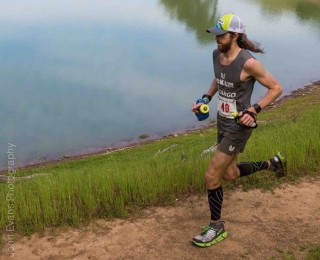
Wardian races earlier this year at the Lake Sonoma 50 Mile. Photo: John Evans
Michael Wardian likes to race. A lot.
So what does someone who competes over 50 times a year at a variety of distances and disciplines do when he’s not racing and wants to work on his speed?
He pushes himself with a simple, yet challenging progression run he likes to call “Out and Back…Faster!” This session can be done virtually anywhere—Wardian prefers a traffic-free bike path or dirt trail—and the exact distance and effort are easily adjustable depending on your experience level and where you are in your training program.
“It’s pretty straightforward,” explains Wardian. “You run out 30 minutes and try to come back along the same course in 28 minutes—or if you are really smoking, 25 minutes. The trick is—and how it becomes a nice workout—is to run a solid effort for the first 30 minutes. If you jog on the way out, it will be tough but not a great workout.”
Wardian suggests running your first 30 minutes at an effort that falls between your half-marathon and marathon pace, then trying to make the return trip between 5 and 15 seconds per mile faster than you went out. He loves this workout because it’s more challenging than it looks on paper and helps you practice finishing hard at the end of a race. For marathoners, it’s a great workout for simulating how you’ll feel in the the last hour of your event.
“It messes with your head in that you know what the finish line looks like and when you are suffering on the return, you know exactly how far you still have to go to be done,” he says. “And when you are not there yet, you have to dig—and I think that helps in races.”
Despite his heavy racing load and hectic travel schedule, Wardian likes to do this workout at least once a month in addition to other types of speed sessions.
“The workout is super simple but gets me fired up and tests me every time,” Wardian says.
The post Workout of the Week: Out-and Back…Faster! appeared first on Competitor.com.
Mary Keitany Going for Repeat at New York City Marathon
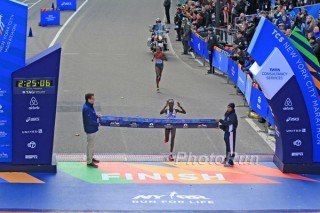
Mary Keitany finishes three seconds ahead of Jemima Sumgong at the 2014 New York City Marathon. Photo: PhotoRun.net
Mary Keitany of Kenya, the 2014 New York City Marathon champion, will be back to defend her title at the 2015 race on Nov. 1, organizers announced Wednesday.
Keitany will be joined by fellow Kenyans Caroline Rotich (this year’s Boston Marathon champion), Sally Kipyego (an Olympic silver medalist in the 10,000m making her marathon debut) and Priscah Jeptoo (the 2013 New York City Marathon champion). Ethiopia will be well-represented, too—Aselefech Mergia and Buzunesh Deba have both clocked sub-2:20 marathons, and Tigist Tufa won the London Marathon earlier this year.
The American field includes Laura Thweatt, who’s making her marathon debut and recently coming off a victory in the Rock ‘n’ Roll Virginia Beach Half Marathon. The 26-year-old also won the U.S. cross country national championship earlier this year.
RELATED: Why I Run: Laura Thweatt
Other Americans in the field include Kaci Lickteig and 18-year-old Alana Hadley, who’s run a 2:38 marathon and will compete in the U.S. Olympic Trials marathon in Los Angeles next February.
Earlier this week, the New York City Marathon announced their elite men’s field, which included Americans Meb Keflezighi and Nick Arciniaga, defending champion Wilson Kipsang and reigning Boston Marathon champion Lelisa Desisa.
The New York City Marathon, the largest marathon in the world, starts in Staten Island and touches all five of the city’s boroughs before finishing in Manhattan’s Central Park. The race will be televised live on ESPN2.
The post Mary Keitany Going for Repeat at New York City Marathon appeared first on Competitor.com.
September 15, 2015
The Pros Aren’t Always Perfect: Lessons Learned From Elite Runners
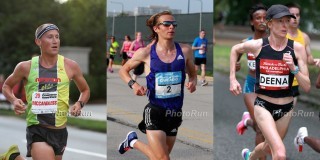
Tyler McCandless (left), Jeffrey Eggleston (center) and Deena Kastor (right) have all made their share of mistakes over the course of their careers—but they've learned from them too. Photos: PhotoRun.net
Watching world-class runners compete is often an exercise in observing perfection. But elite runners are human, too, and every now and then they too make mistakes.
Not surprisingly, a common regret elites own up to is taking their sport too seriously and getting sucked into the hunt for podium spots and prize money. Tyler McCandless, a 2:15:26 marathoner, has worked hard over the past few years to maintain a better balance in his life. “For me, I found it’s important to have something other than running,” admits the 28-year-old Boulder, Colo., resident, who just finished up his PhD in Meteorology. “[A job] helps me keep the joy and purity in running by having a career to focus on as well. When I tried to focus on running too much, I over-thought and over-complicated the process. Now, running is the best part of my day and something I look forward to, rather than the only part of my day.”
That singular drive McCandless references can also lead elites to over-analyze and pick apart every aspect of a race—both good and bad. Jeffrey Eggleston, a 2:10:52 marathoner and three-time U.S. national team representative, says it’s important not to lose sight of what went right in a race, rather than only focusing on the areas where you feel improvement is necessary.
“I tend to be a perfectionist, and I can recall running many PBs where afterwards, instead of taking pride in the accomplishment, I would fret about what went wrong in the race or a setback in training that held me back from the run being even more of a breakthrough,” he says. Eggleston admits that his competitiveness would eat at him, causing him to question why he couldn’t have finished better or faster than he did.
The 30-year-old Boulderite combats this issue by trying to change his attitude and adjusting how he views his performances. “It can be hard to override the urge to be self-critical, but in order to preserve my sanity and longevity in the sport, I’ve tried to make a conscious effort to be an optimist,” Eggleston says. “Whether it’s running a PB by one second, one minute or even finishing higher than my race seed, I try to view the positive side of my running, and even take time to reflect and enjoy when these happen. This also requires me to accept the fact that there will never be a perfect race or perfect cycle of training, and I can only do the best with whatever hand I’m dealt.”
In addition to striving for balance and trying to keep things in perspective, Olympic medalist and American record holder Deena Kastor says doubting herself right before a big race is a major mistake she’s worked hard to combat, in addition to making sure she stays on top of her nutrition, regardless of the conditions.
“I combat self-doubt prior to races by writing down three reasons why I should succeed,” explains Kastor. “Also, not drinking all my fluids in a race when it was cold out has caused me to run out of energy, so I’ve also learned that I need to focus on calorie intake, no matter the weather.”
One final lesson, concedes the self-coached Eggleston, is listening to your body when it comes to recovery and rest and knowing when to hold back. “When planning out my training and racing schedule, the adage, ‘just because you can, doesn’t mean you should’ comes to mind,” he says. “I’ve found that I’ve been able to make significant improvements and keep healthy by emphasizing recovery more.”
RELATED: Why You Should Eat Like an Elite
The post The Pros Aren’t Always Perfect: Lessons Learned From Elite Runners appeared first on Competitor.com.
Ryan Hall's Blog
- Ryan Hall's profile
- 21 followers



